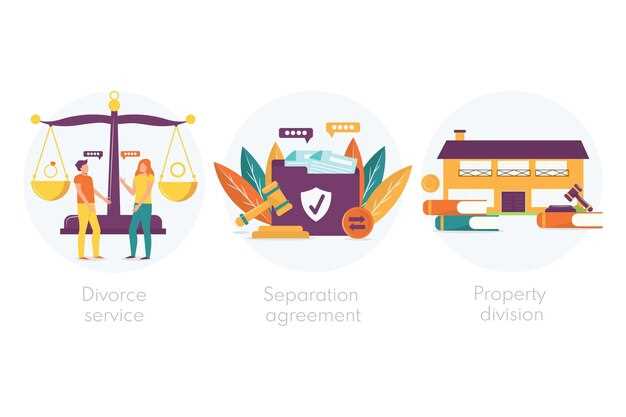Real Estate Development – Legal and Regulatory Framework
Understanding the legal and regulatory framework of real estate development streamlines your projects and minimizes risks. Start by familiarizing yourself with local zoning laws that dictate land use. These regulations determine what kind of developments can occur in specific areas, impacting everything from residential housing to commercial buildings.
Incorporate environmental assessments early in your planning process. Many jurisdictions require thorough evaluations to ensure compliance with environmental protection laws. By addressing these requirements from the outset, you safeguard your project against potential delays and legal challenges.
Engage with local authorities and stakeholders regularly. Building strong relationships with city planners, zoning boards, and community organizations facilitates smoother approvals and enhances community support. Transparency and communication are key to navigating the complexities of the development process.
Stay updated on changes in legislation that may affect your project. Laws regarding land use, housing regulations, and construction standards can frequently change, making it vital to remain informed. Consider subscribing to professional real estate forums and newsletters for timely updates that could impact your plans.
Understanding Zoning Laws and Their Impact on Development Projects

Familiarize yourself with local zoning regulations to enhance your development planning. Zoning laws dictate how land can be used, impacting project feasibility and design. Each jurisdiction has specific zoning classifications, such as residential, commercial, industrial, and mixed-use, which determine allowable activities and building specifications.
Review the zoning map of your target area, as it visually outlines zoning districts and restrictions. This map helps identify potential conflicts and opportunities early in the project. Engaging with a local zoning officer or attending planning commission meetings provides clarity on recent amendments and community sentiments regarding development.
Pay attention to zoning variances. If your project doesn’t conform to existing regulations, you may apply for a variance, which allows for deviations. Understand that these requests often require detailed justification and may involve public hearings. Successfully navigating this process can open doors to innovative projects that otherwise wouldn’t fit conventional parameters.
Stay informed about land use plans and comprehensive plans that guide future development. These documents outline community goals and often include zoning recommendations. Aligning your project with these objectives can facilitate approvals and support from local authorities and residents.
Be aware of the rezoning process. If the sought-after zoning classification is not available, consider petitioning for a change. Successful rezoning requires demonstrating how the new use benefits the community, so gather evidence and community support before proceeding.
Collaboration with architects and planners experienced in zoning issues strengthens your proposal. Their expertise in creating designs that comply with zoning laws while maximizing land value is invaluable. This teamwork can prevent costly adjustments later in the process.
Monitor regulations related to environmental impact and community regulations, as they may complement zoning laws. Compliance with these additional layers of oversight can determine the long-term success of your development project.
Incorporate community feedback into your development plan. Engaging stakeholders helps identify concerns and fosters community support, leading to smoother navigation through zoning processes. Building relationships with local residents can transform potential opposition into advocates.
In summary, understanding zoning laws is paramount for successful real estate development. By leveraging local regulations, engaging with the community, and collaborating with experts, you enhance the viability of your project while minimizing obstacles. Take these steps proactively to ensure your development aligns with both legal requirements and community interests.
Navigating Local Building Codes: Compliance and Best Practices

Consult your local building department before starting any project. They provide crucial information on the specific codes and regulations that apply to your area. Understanding these requirements helps prevent costly delays and modifications later in the construction process.
Understand Zoning Regulations
Research zoning laws as they dictate land use and determine what can be built. Review permitted uses, setbacks, height restrictions, and density limits. Engage with local planning boards for insights and recommendations. This proactive approach helps align your project with community goals and enhances approval chances.
Document and Communicate
Maintain detailed records of all communications with city officials and inspectors. Use checklists to ensure compliance with each phase of the project. Schedule regular site inspections and invite inspectors to verify adherence to codes. Clear documentation provides a transparent process that can facilitate quicker approvals and reduce misunderstandings.
Incorporate sustainable practices into your design. Many regions offer incentives for energy-efficient buildings, which can lead to financial benefits and streamlined permitting. Include these features in your plans to potentially enhance approval opportunities.
Stay informed about updates to local codes and regulations. Join local builders’ associations or forums for networking, sharing insights, and accessing resources related to compliance. Engaging with peers aids in staying current and implementing best practices in your building projects.
Permitting Process: Steps to Obtain Necessary Approvals

Begin by identifying the specific permits required for your real estate development project. Check with local zoning and planning departments to ensure proper compliance with land use regulations.
Next, prepare a detailed project proposal that includes site plans, building designs, and environmental impact assessments. This documentation will be crucial when submitting applications and engaging with regulatory bodies.
Afterward, submit your application along with all required fees. Be meticulous in providing accurate information to avoid delays. Following submission, anticipate a review period during which local authorities will evaluate your proposal against zoning codes and other ordinances.
Stay proactive by communicating with zoning officials and responding promptly to any inquiries or requests for additional information. Engaging with local stakeholders can also pave the way for smoother approvals.
After the review, you may need to attend public hearings. Prepare a compelling presentation highlighting the benefits of your project to the community. Address any concerns raised by local residents or officials to foster support.
Upon receiving initial approvals, make sure to adhere to any conditions set forth by the approving agency. Complete any additional requirements, such as securing environmental permits or utility clearances.
Finally, secure final approvals before breaking ground. Review your project plans to ensure they align with the approved permissions, and maintain open lines of communication with regulatory bodies throughout the construction process.
Environmental Regulations: Ensuring Sustainable Development
Adopt best practices for environmental management during real estate development. First, conduct an Environmental Impact Assessment (EIA) before commencing projects. This assessment evaluates potential effects on local ecosystems and provides strategies to mitigate any identified risks.
Engage local communities in the planning process. Their insights often highlight unique environmental concerns that might not be apparent from a distance. Incorporating community feedback fosters transparency and builds trust, which can ease future project approvals.
Incorporate green building principles into your development projects. Utilize sustainable materials and energy-efficient designs to reduce environmental footprints. Seek certifications such as LEED or BREEAM, which can also enhance the market appeal of properties.
Monitor compliance with local, state, and federal environmental regulations. Regular audits ensure adherence and can prevent costly fines or project delays. Keeping updated with any regulatory changes is crucial to maintaining compliance throughout the development process.
Invest in renewable energy solutions. Solar panels, wind energy, and other renewable sources can significantly decrease a property’s long-term operational costs while promoting sustainability. Explore incentives or rebates available for implementing these technologies.
Practice water management strategies. Implementing rainwater harvesting or greywater recycling systems can preserve local water resources and reduce the impact on municipal systems. Landscaping with native plants also lowers water needs and supports local wildlife.
Finally, prioritize waste reduction during construction. Establish a recycling program for materials such as concrete, wood, and metals. This not only diverts waste from landfills but can also reduce overall project costs. Creating a sustainable development approach leads to better environmental outcomes and enhances the value of your investments.
Property Rights and Land Use: What Developers Need to Know
Understand property rights and zoning regulations. Research local laws and ordinances that dictate how land can be used. This knowledge helps in planning developments compatible with existing regulations.
Key Property Rights
- Fee Simple Ownership: This is the highest form of property ownership, granting full rights to use, sell, or lease the land.
- Leasehold Interests: This occurs when a developer leases land for a specific time. Understand lease terms and renewal options.
- Easements: Recognize rights others may have to use part of the property for specified purposes, such as access to utilities or pathways.
- Restrictions: Be aware of any covenants, conditions, or restrictions that may limit property use or future development.
Land Use Regulations
- Zoning Codes: Familiarize yourself with zoning classifications that dictate permissible land uses, such as residential, commercial, or industrial.
- Permits: Secure the necessary permits for construction, and ensure compliance with local building codes to avoid legal issues.
- Environmental Regulations: Assess potential environmental impacts and comply with regulations regarding wetlands, flood zones, and endangered species habitats.
- Public Hearings: Attend local government meetings to stay informed about community plans and upcoming projects that may influence property value and use.
Proactively engage with local authorities, community groups, and neighbors. Building positive relationships can facilitate smoother approval processes and community support for your project. Prioritize transparency and responsiveness to community concerns.
Understanding the Role of Planning Commissions and Boards
Planning commissions and boards play a critical role in shaping land use and development within communities. They review proposals, recommend action, and ensure compliance with local regulations and comprehensive plans. Engaging with these bodies effectively can significantly enhance the success of any real estate project.
Functions of Planning Commissions
Planning commissions primarily focus on long-term community planning. They gather data on community needs, evaluate land usage, and develop policies that guide future growth. Here are key functions:
| Function | Description |
|---|---|
| Review Applications | Assess zoning changes, subdivision plans, and development proposals for compliance with municipal codes. |
| Community Engagement | Facilitate public hearings to gather input from residents, ensuring community needs are considered in development plans. |
| Policy Development | Draft and propose plans for land use and zoning regulations that reflect community goals. |
Impact of Planning Boards
Planning boards typically handle the approval process for development projects. Their decisions carry significant weight, influencing project timelines and viability. Here are notable aspects:
| Aspect | Implication |
|---|---|
| Approval Authority | Make final decisions on site plans and special use permits, directly affecting project implementation. |
| Compliance Enforcement | Ensure developments adhere to local zoning laws and building codes, protecting community interests. |
| Advisory Role | Advise local government entities on planning matters, influencing policy direction and legislative changes. |
Engagement with both commissions and boards is essential for developers. Building relationships early in the process can lead to smoother approvals and a better understanding of community dynamics.
Dispute Resolution in Real Estate Development: Strategies and Resources
Begin by prioritizing clear communication between all parties involved. Establishing open lines can help prevent misunderstandings that lead to disputes.
Utilize Mediation
Mediation offers a collaborative method to resolve conflicts without court intervention. Engaging a neutral third party facilitates discussions and helps find mutually acceptable solutions. Consider the following steps:
- Select a mediator with experience in real estate issues.
- Ensure all parties agree on the mediation process.
- Set a timeline for the mediation sessions.
Arbitration as an Alternative
If mediation fails, arbitration can be an effective alternative. This process involves a binding decision from an arbitrator, often quicker than litigation. Key points include:
- Choose an arbitrator with specific expertise in real estate law.
- Draft a clear arbitration agreement outlining procedures.
- Prepare thoroughly, presenting all necessary documentation to support your case.
Additionally, to enhance preparedness for any disputes:
- Document all communication and agreements related to the project.
- Establish clear contracts that specify roles and responsibilities.
- Investigate local resources, such as real estate associations, for dispute resolution tools.
By deploying these strategies and leveraging available resources, stakeholders in real estate development can navigate disputes more effectively, ensuring smoother project progression.
Future Trends in Regulations: Anticipating Changes in Real Estate Development
Anticipate stricter environmental regulations as governments increasingly prioritize sustainability. Developments will need to meet enhanced energy efficiency standards and utilize eco-friendly materials. Collaborating with environmental consultants during the planning phase can streamline compliance and reduce potential delays.
Be prepared for changes in zoning laws aimed at increasing housing availability. Many municipalities are considering relaxing zoning restrictions to encourage mixed-use developments and higher-density housing. Engaging with local stakeholders early can foster community support and facilitate smoother approvals.
Embrace technology as a key factor in regulatory compliance. Software solutions for managing regulatory requirements and project timelines are becoming more common. Investing in these tools can enhance reporting capabilities and improve transparency, aiding in adherence to regulatory demands.
Follow trends in digital transparency and open data initiatives. Expect regulations that require developers to disclose more information on project impacts and community benefits. Building a strong communication strategy that outlines the project’s advantages can resonate well with communities and regulators alike.
Anticipate increased focus on affordable housing mandates. Cities are likely to implement requirements for a percentage of units in new developments to be set aside for low-income residents. Stay informed about local policies and consider structuring developments that align with these goals to enhance project viability.
Monitor the rise of health and safety regulations, especially in response to recent global events. Innovations in public health standards may influence design elements in residential and commercial properties. Integrating health considerations into design from the outset will not only ensure compliance but also attract health-conscious buyers.
Invest time in understanding shifting property taxation regulations. As local governments seek funding for infrastructure and services, be aware of possible changes that could affect profit margins. Keeping a close relationship with local tax authorities can provide insights into potential tax incentives or liabilities.
Engage in advocacy for reasonable regulatory frameworks. Join industry groups that work on policy advocacy. Collective efforts can shape future regulations and ensure they support responsible development while addressing community needs.
Video:
Real Estate Regulation and Development
Real Estate Regulation and Development by IIT Roorkee July 2018 826 views 5 years ago 30 minutes
Q&A:
What are the key legal requirements for real estate development?
Real estate development requires adherence to multiple legal requirements, which may vary by jurisdiction. Key elements include zoning laws, which dictate how land can be used; building codes, which establish safety and construction standards; and environmental regulations, which ensure that developments do not harm the environment. Developers must also secure permits and approvals from local government bodies before commencing construction. Additionally, contracts with contractors and other parties involved in the development process must be legally sound to avoid disputes later on.
How do zoning laws impact real estate development projects?
Zoning laws significantly influence real estate development by defining how land can be utilized. These laws categorize land into zones such as residential, commercial, industrial, or mixed-use, each with specific regulations regarding the type of structures allowed, their height, density, and intended use. Developers must work within these guidelines, which can affect project feasibility and potential profitability. A developer may need to seek a zoning change or variance if their project’s objectives conflict with existing zoning regulations, which can involve a lengthy approval process and public consultation.
What role do environmental regulations play in real estate development?
Environmental regulations play a critical role in real estate development by ensuring sustainability and compliance with laws designed to protect natural resources. Developers are often required to conduct Environmental Impact Assessments (EIAs) to evaluate how a proposed development could affect the surrounding environment, including air and water quality, wildlife habitats, and local ecosystems. Compliance with regulations regarding waste disposal, land use, and resource management is also crucial. Failure to adhere to these regulations can result in fines, project delays, or even legal challenges, making it vital for developers to integrate environmental considerations into their planning processes.
What should developers know about contract negotiations in real estate development?
Contract negotiations are a fundamental aspect of real estate development, as developers engage with various parties such as contractors, suppliers, and investors. It is critical to ensure that contracts clearly delineate responsibilities, timelines, payment schedules, and dispute resolution mechanisms. Developers should be aware of the specific legal jargon and implications involved in contracts to safeguard their interests and limit liabilities. Engaging legal counsel with expertise in real estate can be beneficial to navigate these negotiations effectively. Careful attention to detail at this stage can prevent misunderstandings and costly disputes during and after the development process.













